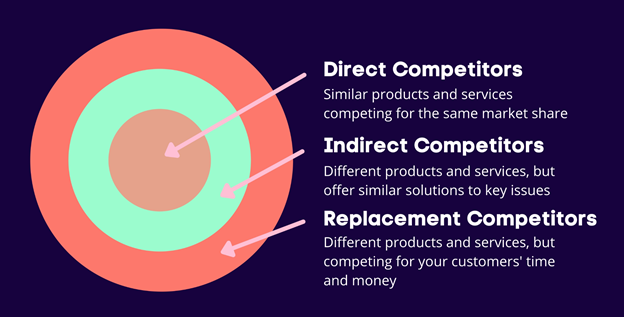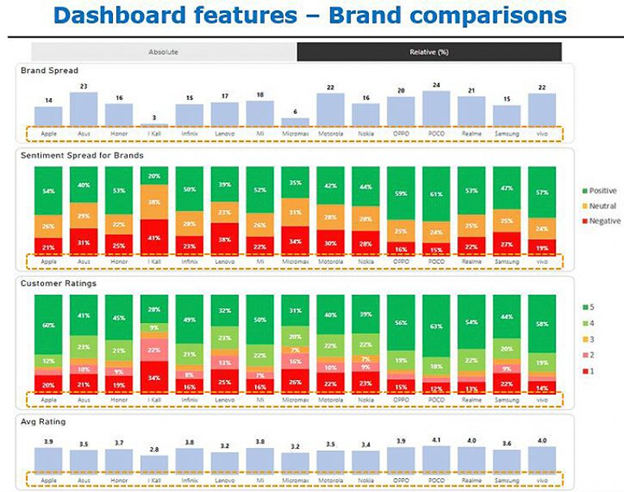“You should learn from your competitor, but never copy. Copy and you die.”
– Jack Ma, Executive Chairman of Alibaba Group
Jack Ma may be oversimplifying here, but it’s nothing short of the truth coming from a leader of Amazon’s twin marketplace in China. A total of 12 million – 24 million e-commerce sites exist worldwide, and more are mushrooming every single day. To compete in such a fierce and competitive e-commerce landscape, your team needs the intelligence to discern a distinctive advantage, an opening, an immediate opportunity to be proactive.
Whether it’s pricing, assortment, product positioning, or uncovering a feature visitors expect from your website. Here’s where e-commerce competitive intelligence comes in. It gets at the truth by objectively detailing what is happening, helping you and other stakeholders effectively prioritize strategic decisions.
Still mulling over what’s in a competitive intelligence study for your business? Check if you tick at least one of these boxes:
- Have you noticed possible signs of an opportunity, but aren’t sure if it makes sense for your e-commerce business?
- Has a competitor introduced a new unexpected product or service or feature that your customers demanded, and that you did not know they wanted?
- Has a direct competitor been successful in distributing a totally new channel? One that’s unusual in your industry, or to selling to a different customer segment altogether?
- Do you have a marketing strategy or problem to solve and don’t have enough information insight?
- Are you unsure if have sufficient specific, accurate and current information to make a strategic decision?
Identifying your competitors
It’s not uncommon to be blindsided by loss of sales to a market player you probably didn’t consider as a direct rival. By scanning your entire purview, competitive studies help you stay prepared to tackle such surprises by first identifying all sorts of potential competition that should be on your radar. These include:
- Direct competitors – Those who serve the same audience as you or have similar products and services.
- Indirect competitors – These are those that market a similar product to a different audience, or offer a low-cost or high-cost version of your product
- Third-level or replacement competitors – These are businesses with somewhat related trending products or services. For instance, you are a brand that sells ready-made apparel, whereas a third-party competitor would be one that sells unstitched garment materials.

Other fundamental ways to discern your real business rivals are by checking which brands/marketplaces are you most often compared with, the business names your customers mention in conversations. e-commerce competitive intelligence also Identifies companies that address similar market needs, solve similar challenges, or address similar pain points. Moreover, it also lists companies that appear in similar search results to yours.
Understanding their pricing strategies
When competing with another retailer on a newly-launched product that’s most likely to fly off the shelves, how can you ensure you get a bigger share of the sales pie? Detailed e-commerce competitive intelligence helps you get key competitor data, to drive timely business decisions. These include answering:
- At what price are they selling the product?
- How quickly are they delivering it?
- Do they have any bank/card-based discounts that they are harping on exclusively for the product?
- What upsells or cross-sells are they leveraging along?
Monitoring these aspects allows you to gauge the worth of a price match, check if you could deliver faster, or offer better alternate recommendations. Knowing how you fare in comparison to your rivals on price is an indisputably valuable insight for any e-commerce company. Savvy companies employ automated pricing intelligence options to gain a timely market edge.
Uncovering your rival’s website strategy
75% of consumers admit to making judgments on a company’s credibility based on the company’s website design. By scouring your competitor’s website, you can gain tangible insight into their strengths and weaknesses, especially when benchmarked against your own website. These would typically involve analyzing –
- Products pages: What kind of information do they provide? What formats and styles do they apply for their product photos?
- Positioning: How are they positioned their products? Is there an angle they have not explored yet?
- CTAs: Are they employing any particular strategy in their call to action placements?
- Contact: What customer service touchpoints do they offer? (e.g – live chat or phone support)
From an SEO standpoint, savvy players would do well to evaluate the following as a part of their e-commerce competitive intelligence process –
- Are they ranking for any specific keywords?
- How is the keyword usage in product titles and keyword density in descriptions?
- What is the average number of organic visitors they receive?
- Do they use alt tags for their product photos?
- Do they run paid search campaigns?
Analyzing these and other related parameters will not only help you benchmark your standing, it will also offer insight into what could be their next potential website strategy.
Getting your assortment right
Is your competitor aggressively selling a product that’s not present in your assortment? Here are some ways to ensure you are not left in the dark:
- Take a look at annual reports for top-selling categories
- Find out what products sell best by talking to sellers and logistics partners
- Skim through reports that underscore challenges – they almost always have product and category mentions
- Give ear to industry leaders and their topic of discussion at conclaves
- Keep an eye on your competitor’s Facebook ads
- See what people are complaining about on Twitter
Besides using these common ways of identifying bestselling products, you can hire industry experts who rely on proven technology and methodologies to identify the most in-demand products.
Gain insight on customer sentiment through review analytics
By analyzing open-source data, savvy players are already gaining useful insights from customer reviews. Measuring sentiment that’s feature-driven is a critical aspect of e-commerce competitive intelligence. Why? Because it uncovers the good, the bad, and the ugly of each product. For instance, if a review for a trouser reads, “The fit is great but the material is not breathable,” the analytical results will identify the sentiment for the fit being positive while for the material being negative.
It doesn’t end here. Netscribes’ proprietary review analytics tool comes built-in with a few cognitive layers as well – grammar being one of them. For instance, if “cheap” is mentioned in relation to price, it captures that as a positive sentiment, but if it’s mentioned in the context of the material used for manufacturing, it concludes it as negative. Being captured as individual feature-based sentiments, these inputs help marketplaces gain an overall perspective into competing brands along with their strengths and weaknesses. It also gives brands and sellers insights into their choice of words while crafting customer-centric product content.

Competitive intelligence in e-commerce is instrumental for forming new business strategies, presenting valuable market insights into current developments. A business’s operations, strategies, and tactics can witness an effective transformation and ROI growth by the insights and information gathered from research and structured analysis. To know how we can help stay highly cognizant and equipped to make the next strategic leap well ahead of your e-commerce competitors, contact us.






